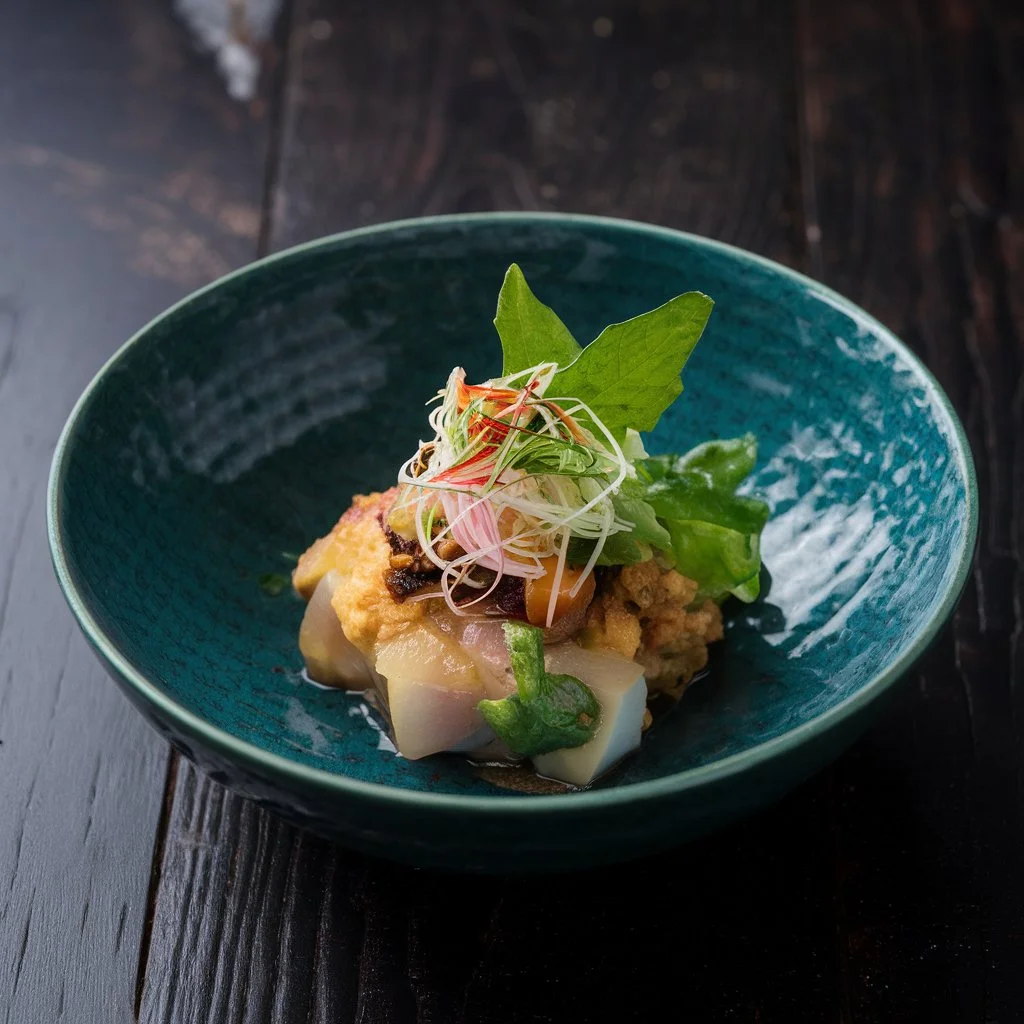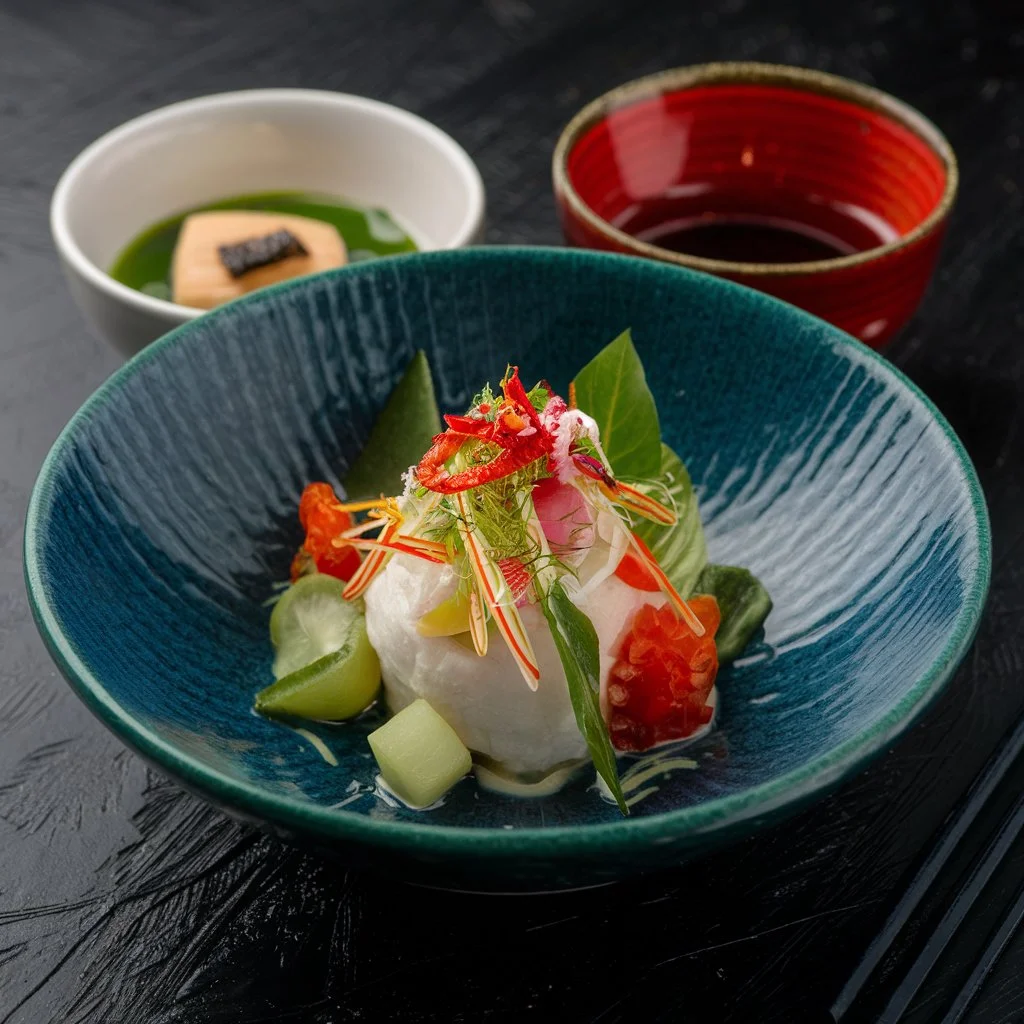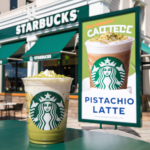Introduction
Modern gastronomy is now characterized by culinary fusion, which offers a seductive mix of flavors, methods, and cultural influences. We set out on a quest to discover the complex tapestry of flavors that arises when traditional Japanese culinary principles collide with international gastronomic trends in this investigation of Japanese cultural fusion cuisine.
Japanese cultural fusion cuisine enthralls diners with its inventiveness, inventiveness, and devotion to culinary legacy—whether it is served in the busy streets of Tokyo or in the varied dining scenes of other cities.
Origins and Evolution
Japanese cultural fusion cuisine has deep roots that combine contemporary ingenuity with centuries-old culinary traditions. We must first examine the historical circumstances that have influenced Japan’s culinary scene in order to comprehend its evolution.
Washoku, or traditional Japanese cuisine, places a strong emphasis on simplicity, balance, and seasonality. But over the ages, commercial routes, cultural contacts, and the influx of foreign ideas have broadened Japan’s culinary lexicon.
The 16th-century introduction of Portuguese tempura to Japan is considered one of the first instances of cultural fusion in the country’s history.
Portuguese missionaries first introduced this frying method to Japan, where it developed into a cherished culinary custom that complemented regional foods and flavors. Similar to how Chinese and Korean products and cooking methods were introduced, Japanese cuisine became more diverse, setting the stage for further fusion projects.
Japanese culinary attitudes saw a dramatic change in the years following World War II as the nation embraced Western inspirations and methods.
Sushi bars became increasingly popular in the United States in the 1960s and 1970s, bringing Japanese food to a wider audience and encouraging experimentation with sushi rolls, sashimi variants, and fusion-inspired dishes.
The Essence of Fusion
The art of balancing disparate flavors, textures, and techniques is the foundation of Japanese cultural fusion cuisine. Cooks skilled in this culinary alchemy combine world items like cheese, avocado, quinoa, and spices with traditional Japanese ingredients like miso, dashi, and seaweed.
This combination of ingredients produces a flavorful symphony that pleases the tongue and cuts across cultural barriers.
One of the more creative fusion foods is the sushi burrito, a portable snack that combines the ease of a burrito wrap with the elegance of sushi.
The okonomiyaki pizza is another exceptional invention that combines the cheesy richness of pizza with the savory pancake flavors of okonomiyaki. In addition to showcasing culinary creativity, these dishes also represent the changing tastes and preferences of consumers looking for unique eating experiences.
Cultural Dialogues on the Plate
Japanese cultural fusion food promotes awareness, comprehension, and investigation of many culinary traditions while acting as a forum for cross-cultural discussions. Chefs pay homage to global inspirations and Japanese heritage through fusion cuisine, resulting in a lively culinary debate that cuts across national boundaries
Guests are encouraged to take part in a culinary adventure that honors creativity and variety.
A notable illustration of cross-cultural interaction via fusion food is the New York City-born ramen burger phenomenon.
This creative recipe combines Japanese ramen flavors with American comfort food by using ramen noodle patties in place of standard burger buns. Similarly, sushi tacos combine Mexican and Japanese culinary ingredients in a well-balanced fusion of flavors and textures to create a creative take on the classic sushi presentation.
Innovative Techniques and Ingredients
Japanese cultural fusion cuisine is fueled by innovation, with chefs stretching the bounds of custom to produce one-of-a-kind culinary creations. Fusion cuisine goes beyond sushi and sashimi, utilizing cutting-edge methods like sous vide, molecular gastronomy, and inventive plate designs.
Fusion dishes that captivate the senses incorporate ingredients like foie gras, truffles, and exotic fruits that were previously thought to be out of the ordinary in Japanese cooking.
The notion of “kaiseki fusion” has also gained popularity, fusing international ingredients and presentation techniques with the attention to detail of kaiseki cuisine. With this method, conventional multi-course meals are transformed into cutting-edge culinary displays that highlight the adaptability and variety of Japanese culinary concepts.
cultural fusion dishes in japanese

Regional Influences and Global Collaboration
Japanese cultural fusion cooking incorporates a variety of local influences as well as international partnerships, rather than being restricted to a single cooking technique. From Tokyo to New York, Paris to São Paulo, chefs worldwide find inspiration in regional ingredients, culinary customs, and cultural subtleties to craft masterful fusion dishes that embody their own culinary personas.
For example, “Hawaiian-Japanese fusion” has become popular in Hawaii, where Japanese cooking methods are combined with local flavors like taro, pineapple, and coconut.
This fusion pays honor to the Japanese immigrants who made substantial contributions to the culinary scene of Hawaii while also celebrating the island’s varied past.
Similarly, cross-cultural culinary exchanges that challenge convention arise from partnerships between Japanese and other foreign chefs.
Pop-up restaurants, chef partnerships, and food festivals highlight the dynamic quality of Japanese cultural fusion cuisine and entice customers to savor the diverse array of flavors presented on their dishes.
Sustainability and Conscious Cuisine
Sustainable methods, seasonal products, and mindful cooking techniques are all embraced by Japanese cultural fusion cuisine, which follows the lead of the culinary world in embracing sustainability and conscious consumption.
As environmental stewardship in gastronomy gains momentum, chefs are prioritizing new plant-based alternatives, little food waste, and local sourcing in their fusion creations.
Fusion foods support sustainability while accommodating a wide range of dietary requirements, such as vegan sushi rolls and plant-based ramen bowls. In a culinary ecosystem that prioritizes transparency and traceability,
“farm-to-table fusion” places an emphasis on the quality and freshness of ingredients, establishing direct relationships between growers, chefs, and diners.
Future Trends and Culinary Innovations
Future directions for Japanese cultural fusion cooking indicate further invention, cooperation, and discovery. Innovative developments in the culinary arts, such AI-generated recipes, 3D-printed food, and virtual dining experiences, present fresh opportunities for artistic expression. Cooks adapt fusion meals to changing consumer tastes and preferences by utilizing technology, data analytics, and consumer insights.
The idea of “culinary tourism” is also important, since tourists are looking for immersive eating experiences that combine global influences with regional cuisines. Cooking lessons, interactive dining events, and culinary tours offer forums for cross-cultural dialogue and culinary education, enhancing the culinary scene with a variety of tastes and viewpoints.
Conclusion: Celebrating Culinary Diversity
Japanese fusion food is a manifestation of innovation, teamwork, and cultural understanding. It crosses national boundaries and creates a harmonious culinary tapestry by fusing ingredients, methods, and customs from all around the world.
Savoring these fusion pleasures, diners are taken on a sensory adventure that highlights the diversity and depth of world cuisine. We cross cultural boundaries, spark dialogue, and generate enduring culinary memories that span countries through fusion food. Salutations to the boundless prospects of gastronomic concord!




















